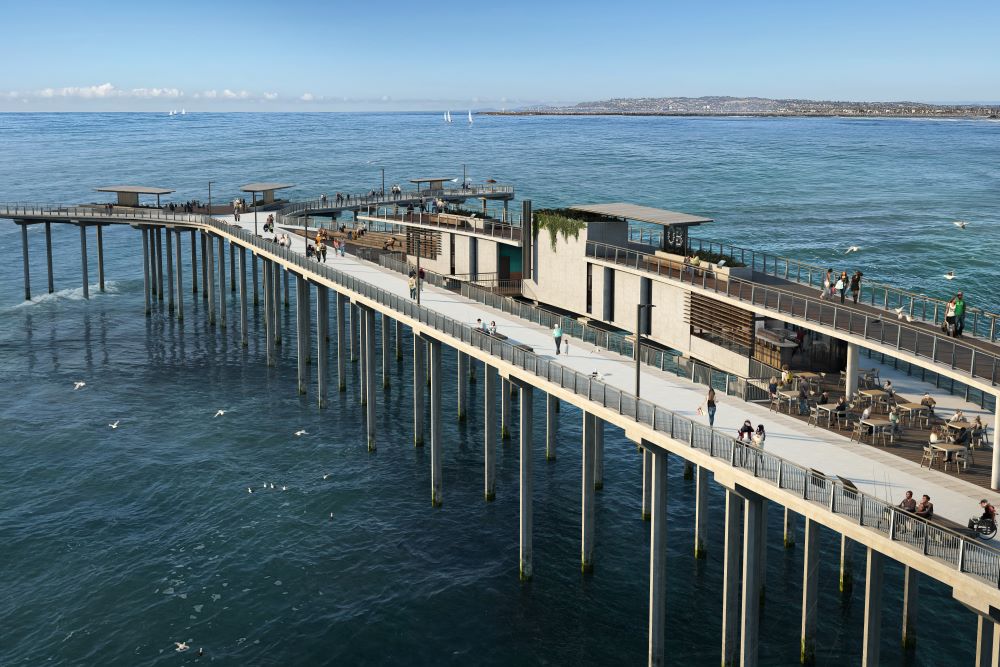History and Background of Public Participation
City Engagement Today
Today, City departments employ diverse and innovative public outreach and engagement techniques to involve the public in City projects.
Sharing information
The City uses electronic platforms to share information with the public, such as through e-newsletters. Inside San Diego provides Citywide news and updates for subscribers interested in news across the organization. Many City departments also have regular newsletters sharing information about planned or ongoing work, allowing people to stay informed about specific topics they are interested in.
City departments offer virtual, in-person or hybrid workshops and information sessions to educate residents about planned or current services. For example, the Environmental Services Department has held in-person and virtual information sessions about the Organic Waste Recycling Program.
The City has also implemented creative information-sharing methods. For the Stormwater Department’s Think Blue San Diego educational campaign, staff and partners participated in pop-up booths at local events, film screenings and art installations that raise awareness about stormwater pollution.
The City has also implemented more casual ways to share information, such as “Coffee with a Cop,” an event at which community members are invited to meet their local police officers at a coffee shop so that officers can share information and answer questions.
Meeting people where they are allows the City to be effective when sharing information about government programs and services. For example, the Economic Development Department went business to business in flood-impacted areas after the Jan. 2024 storm to share information about emergency relief grant opportunities for small businesses and nonprofits. The City’s Coordinated Street Outreach Program also conducts focused outreach events in areas with people experiencing homelessness to share resources and connect them to supportive services.
Collecting input
In addition to traditional engagement platforms, the City has taken various steps to broaden the range of inclusive engagement strategies.

Surveys are a standard tool across departments for gathering community input. For example, the City has an ongoing survey that asks for community input on infrastructure priorities like sidewalks, parks and libraries to help prioritize infrastructure projects. For some specific infrastructure projects, like the Ocean Beach Pier Renewal, surveys have been used to assess which design option the public prefers.
Digital engagement via mobile application is another avenue for collecting input. The City’s Get-It-Done app allows community members to submit requests and reports about non-emergency infrastructure or maintenance issues within the City right-of-way. Reports connect directly to the City’s work tracking system, which provides users with information about the progress of their requests.
In recent years, the City has partnered with community-based organizations (CBOs) for their engagement services for projects such as the Climate Action Plan and the Environmental Justice Element. Through these contracts, CBOs have implemented techniques to reach and seek input from people in their communities. For example, to capture input about climate resilience priorities, CBOs conducted bilingual phone banking to understand how climate change impacts local residents' quality of life. To gather feedback about environmental justice priorities, some CBOs conducted walk audits with community members to observe local environmental conditions and identify opportunities for improvement.
Some City projects have focused on reaching specific demographics or industry sectors to build a shared vision for the future. For example, the City’s Child and Youth Strategic Plan is a roadmap of youth success solutions created from a wide range of engagement activities with children, youth and their families. The City held more than 33 focus groups to hear the priorities of close to 300 youth and young adults.
Moving forward
The Inclusive Public Engagement Guide will build upon these efforts to make sharing information and collecting public input efficient, cohesive and inclusive across City departments, while also expanding the range of strategies staff can use to create opportunities for public participation.


 Inclusive Public Engagement Guide
Inclusive Public Engagement Guide